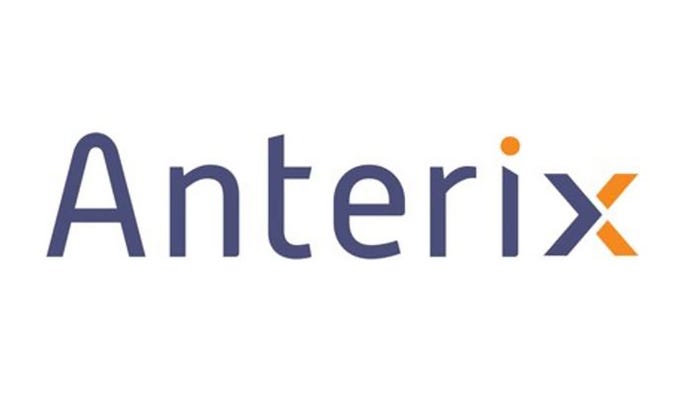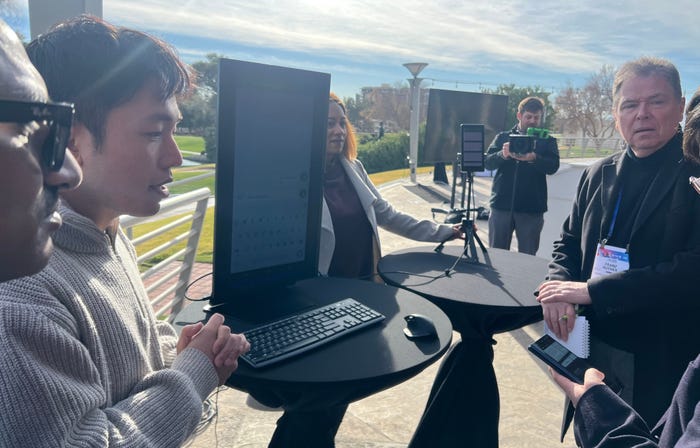Reduce noise in distributed communications systemsReduce noise in distributed communications systems
Back-end design fixes cannot improve a bad "noise launch" at the radio system input, but tower-mounted amplifiers can improve overall system noise figure.There
October 1, 2000
Back-end design fixes cannot improve a bad “noise launch” at the radio system input, but tower-mounted amplifiers can improve overall system noise figure.
There are many types of noise. Most are nuisances, and some are downright destructive to communications. Two types of noise can affect the operation of all active devices, including transistors, packaged amplifiers and radio receivers. One type of noise is generated within active devices, effectively limiting the number of components or amplifiers that can be chained. The other is desensitizing noise that literally overloads, or swamps, the input stages of amplifiers and receivers, rendering them insensitive to intended signals.
Internally generated noise (equipment noise) is additive with other system noise. Noise-threshold limits are determined, literally, by the amount of equipment involved. This is true for the front-end operation of a receiver or for a long string of bidirectional amplifiers in a tunnel. Each element of the system, be it a gain block or passive network, adds its bit of noise. Cumulative noise will ultimately desensitize a system to the point of unacceptable performance. Fortunately, in most modern equipment designs, a great number of blocks must be cascaded before “noise build-up” begins to approach practical sensitivity thresholds.
Desensitizing noise is manmade and external to the system. Power line noise, which can take many forms, is often broadband enough to affect more than one radio communications service simultaneously. Impulse noise, such as that generated by automobile ignition systems, is another common form of desensitization to VHF and UHF receivers. Enough noise of these types will effectively kill a system’s response to intended signals. A receiver or amplifier will effectively shut down in the presence of strong noise because of bias shift in the input stages.
Noise: An analogy Consider a ball game during which you see the hot dog vendor, maybe 150 feet away – too far to get his attention. You can’t yell loud enough over the noise of the crowd. So you get the attention of someone 50 feet away and ask him to pass it on. Here, we have ambient noise (the crowd) and gain blocks in the form of two or three “pass it on” volunteers. Sound loss between each volunteer is about equal to each one’s “yelling volume.” You are just about to deliver your hot dog order when a fan between volunteers 2 and 3 begins to shout loudly at the umpire. The fan’s outburst becomes additional noise disrupting communications over one section of the path. Before the fan started yelling, there was net zero gain, with each volunteer contributing just enough “power” to overcome the loss in his section, or link, of the system. The added burst of noise was enough to disrupt communications.
This illustrates what noise can do in a communications system. Fortunately, communications equipment with guaranteed noise specifications gives us a bit more design control than we had over the hot dog path. The use of good “noise sense” and careful design procedures can lead to successful communications over an almost unlimited number of links.
Key points related to system noise (c) Noise temperature definition – At a pair of terminals, and at a specific frequency, it is the temperature of a passive system having an available noise power-per-unit bandwidth equal to that of the actual terminals.
In the context of this definition, “pair of terminals” means the terminals of any active system under consideration, such as an antenna, transmission line, resistor or amplifier. “Active” does not necessarily mean gain in this definition (i.e., inert components have “negative gain,” or loss, but the system as a whole is still active). Essentially, noise temperature is the ratio between noise at the terminals of a network and the noise that exists at the reference temperature (290§K) of a totally passive system.
(c) Noise factor – The ultimate sensitivity of an amplifier is set by the noise inherent to its input stage. A precise evaluation of a device’s noise quality is obtained by means of its noise factor. Noise factor, as described below, is a ratio of powers. An amplifier’s input impedance must closely match the source impedance for maximum power to be transferred to the amplifier.
The input termination (impedance) has an available noise power given by the expression:
where
K 5 Boltzmann’s Constant (1.38 3 10 superscript 223 joules per degree Kelvin).
T 5 temperature in degrees Kelvin. (Room temperature, 290???K, is used in most ordinary noise calculations.)
B 5 noise bandwidth in hertz.
A perfect, noiseless amplifier with gain G would have an output noise power over a given bandwidth of:
where
G (gain) is a multiplier.
BW 5 noise bandwidth.
Note: If G 5 1 and BW 5 1Hz, then
P subscript n 5 4 3 10 superscript 221watts 5 2174dBm
Decibels above one milliwatt (dBm) is a logarithmic power term that appears frequently in noise formulas.
(c) Example – As shown in the following equation, the output noise power of a “perfect” 40dB-gain amplifier (numerical gain of 10,000), operating over a 30kHz bandwidth, would be:
A perfect amplifier generates no noise power of its own. A real amplifier generates internal noise because of thermal effects and molecular agitation. The numerical ratio of output noise power between real and perfect amplifiers is noise factor (F). Noise factor compares the noise power output of a model, perfect amplifier with the noise power output of a practical amplifier under the same gain and bandwidth conditions. It is described by the expression:
where
P subscript n 5 noise power output of a real amplifier.
KTBG 5 noise power output of a perfect amplifier.
G 5 numerical gain.
(c) Example – Solving Eq. 3 for noise power, P subscript n, and with F 5 1 for a perfect amplifier, the noise power output is 1.2 3 10 superscript 212W. In other words, a perfect 40dB amplifier operating over a 30kHz bandwidth at room temperature would have a noise output of 1.2 3 10 superscript 212W. A typical practical amplifier under the same conditions might have a noise power output of 1.4 3 10 superscript 211W. Calculating the noise factor by Eq. 3 yields:
(Note: Noise factor is always a numerical ratio.)
Noise factor, then, is a multiplier used to predict the amount of amplifier noise power output compared with the noise power output that would occur in a perfect amplifier under the same conditions.
(c) Noise figure – Signal-to-noise ratio (SNR), at the receiver’s output is a critical element in the communications link. All information received, whether analog or digital, encrypted or “clear,” is subject to confusion on the part of the interpreter. Accurate interpretation of information drives the necessity for measurable quantities. Noise figure, N, is a measurable figure of merit. In digital systems, the quantitative reliability measure is bit-error rate (BER). Bit-error rate is closely related to noise figure in a non-linear way.
The logarithmic expression of noise factor is noise figure, or:
(c) Example – The noise figure, N, of the amplifier in the example above would be:
Note: Noise factor, F, is a ratio of powers, and noise figure, N, is the logarithmic expression of noise factor. Noise figure is more commonly used, especially for calculations.
The output noise power, in dBm, of a device is given by:
where:
P subscript N 5 noise power in dBm at 290??? Kelvin (room temperature).
BW 5 bandwidth in hertz.
G 5 gain in dB.
N 5 noise figure.
Essentially, the output noise power, P subscript N, of an amplifier is equal to the noise of the perfect amplifier plus a noise figure, N. Output noise power is generally expressed in dBm. Notice in Eq. 5 that noise power output varies with gain and bandwidth. Over the same noise bandwidth, and with the same gain and noise figure, noise power output of both heterodyne and non-heterodyne amplifiers is the same. However, there is a definite noise power advantage for heterodyne repeater amplifiers arising from the use of intermediate frequency (IF) filters to reduce system noise bandwidth. The effect of reduced bandwidth on P subscript N is apparent in Eq. 5.
(c) Noise temperature – Noise factor, noise temperature and reference noise are related by the expression:
where:
T subscript r 5 device noise temperature.
F 5 is noise factor.
T 5 noise temperature, referenced to 290???Kelvin.
(c) Example – From this equation, noise temperature of the 40dB amplifier above would be:
(c) Sensitivity – Sensitivity, like noise figure, is a measurable figure of merit. Sensitivity is defined as the smallest signal a network can reliably process. This definition specifies the strength of the smallest signal at the input of a network that causes the output signal power to be M times the output noise power, where M must be specified. M 5 1 is generally used, although special applications, such as SINAD receiver measurements, use other values of M. Sensitivity is bandwidth dependent. At a source temperature of 290???K and M 5 1, the relationship of sensitivity to noise figure is:
Note: (N subscript fig 5 10 3 log F), therefore sensitivity, in dBm is:
It can be seen that with a known bandwidth, sensitivity is directly related to noise figure.
Receiver system noise figure, consistent with known sensitivity, is calculated by solving Eq. 7 for N, as:
(c) Example – Assume a cellular receiver system is expected to process minimum signals of 2116dBm (0.35mV). The term “receiver system” is used here because all cascaded elements ahead of the actual receiver affect the noise figure. From Eq. 7a, receiver system noise figure is calculated:
Adding 6 dB for a performance margin “below threshold” reduces the noise figure to 8dB.
Thus, it can be seen that noise performance and gain are solidly linked in the challenging arena of RF amplifier design. As many RF designers have discovered, gain is an “empty parameter” and almost meaningless when considered by itself, without the correlation of a noise figure.
Amplifiers in cascade When several devices are cascaded together to form a chain, the whole chain can be evaluated as a single element with a cascaded noise figure. The general formula for total system noise factor is given by:
where:
F subscript s 5 system noise factor.
G subscript 1…G subscript (n 2 1) 5 numerical gain of the individual elements,
where: loss in dB is taken as a negative gain,
elements, where N is noise figure.
As an example, 110 feet of 7/8-inch, foam-dielectric coax, two repeater amplifiers and a bandpass filter are shown in cascade in Figure 1 on page 32.
Cable loss is 1.4dB, amp #1 gain is 35dB, amp #2 gain is 38dB, noise figure of each amp is 10dB, and the insertion loss of the filter is 3.5dB. System noise factor is:
Accordingly, system noise figure of the string is N 5 10 log 13.89 5 11.43.
Thus, the noise figure, 11.43dB, of the cascaded string is greater than the 10dB noise figure of the first active element in the string. This is always true, and how much greater will depend on the “noise mass” of the string. Noise contributions of short jumper cables make little difference in the outcome. In more formal noise performance evaluations, all noise-contributing elements should be considered.
When a series of cascaded amplifiers, each of gain G, is interconnected, with each driving a load equal to its gain (load 5 2G), the system is said to be a zero dB system. The system noise factor equation then simplifies to:
Simplifying further and converting to noise figure, this becomes:
where:
N 5 noise figure.
n 5 number of amplifiers.
F 5 noise factor.
For example, as shown in Figure 2 on page 32, consider four sections of cascaded line amplifiers and radiating cable operating in a “zero dB” tunnel system. Each line amplifier of 20dB gain drives a section of radiating cable having 20dB loss.
The uplink noise figure of each line amplifier is 9dB; the noise factor is, therefore:
From the zero dB noise figure, Eq. 9, the cascaded noise figure of the amplifier string becomes:
Noise power out of the string can be determined from Eq. 5 as:
The string’s performance is evaluated as if it consisted of only the last amplifier. SNR at the string’s end is referenced relative to 295dBm. If the amplifier signal output is 130dBm, SNR would be 30 2 (295) 5 125dB. From Eq. 7, sensitivity is 2115dBm. The effect of “noise build up” can be seen when the string’s sensitivity is compared with that of a single amplifier acting alone, or 2121 dBm.
Suppose instead of four amplifiers, the chain consists of 20 amplifiers. Again, the uplink noise figure of each amplifier in the string is 9dB, and the noise factor, F, of each amplifier is 7.9dB. Therefore, from Eq. 9, the noise figure of the string of 20 amplifiers is 21.4dB, and from Eq. 7, the string sensitivity is 2109dBm. Although diminished, the sensitivity of the string of 20 amplifiers is still well below the typical cellular contour level of 280dBm. Noise “build up” is seldom a problem in properly designed amplifier and cable systems. Amplifier/radiating cable systems are possible over almost limitless distances, a point attested to by the long tunnel communications systems in use around the world.
Tower-mounted amplifiers, receivers The following is taken from design notes on the uplink, or talkback, side of a 1,900MHz PCS system. Imagine you are looking over the shoulder of a designer confronting the usual problem of talkback range vs. talkout range.
The designer has established a base transmitting station (BTS) range of 4.5 miles. He must now determine if the mobile can talk back to the BTS receiver over the same path. Because systems of this type are usually talkback-limited, he has decided to use a tower-top amplifier (TMA) in the uplink receiver. The uplink gain budget form the mobile to BTS receiver is:
where:
27dBm 5 600mW portable output. 26 5 portable antenna efficiency.
2153dB 5 path loss mobile to tower. 22dB 5 antenna gain at tower.
295dBm 5 target receive level (note 20dB above minimum receiver sensitivity).
Solving, X 5 15dB, or the amount of additional gain in the uplink path necessary to input 295dBm into the BTS receiver.
So, the designer determined a 15dB-gain TMA would offset the disparity between BTS talkout and talkback. Unfortunately, because of noise considerations, a 15dB-gain TMA won’t deliver a 15dB path improvement.
Path improvement resulting from a TMA can be estimated by noise analysis of the receive path on a “before and after” basis. See the “before” diagram in Figure 3 on page 34, and calculate the noise between the antenna and the input to the receiver. Each noise-contributing element is calculated separately before combining it in the cascade noise factor formula. Starting at the input jumper:
From Eq. 8, calculation of individual element gains and noise factors:
Substituting gains and noise factors into Eq. 8:
Therefore, noise figure of the system, without a TMA, N 5 10 log 6.92 5 8.40.
Now, refer to the “after” diagram (Figure 4 on page 36), and calculate system noise figure with a TMA. The path through the TMA has special support components, including a different duplexer and a bias tee. Also note the use of smaller, more economical (1/2-inch) feeder cable. Starting at the jumper, gains and noise factors of individual elements are:
Input jumper, G 5 0.93 and F 5 1.07, same as before, TMA, with 15dB gain and noise figure, 2.2dB,
bias tee,
receiver with noise figure, N, of 5dB,
and, by Eq. 8, cascade noise factor,
Therefore, noise figure of the systems with a TMA: N 5 10log2.02 5 3.06.
Noise figure improvement amounts to subtraction of the before and after noise figures, or 8.40 2 3.06 5 5.34dB. Five dB of noise figure improvement translates to the same amount of improvement in talkback conditions. In essence, the addition of a 15dB gain TMA yields a 5.3dB improvement in the talkback path.
The BTS receiver input calculation now becomes:
27dBm 2 6 2 153 1 22 1 5.3 5 2104.7dBm.
The BTS, designed to deliver 295dBm to a mobile receiver at 4.5 miles, will receive a talkback level of 2105dBm from mobiles at the same distance. Even though total range is less than on the downlink side, good performance at 4.5 miles is assured because the BTS receive level of 2105dBm is 11dB above minimum receiver sensitivity.
In summary, with the parameters set forth, the BTS talkout range is 4.5 miles. Mobile talkback limitations cannot be completely overcome with a tower-mounted amplifier. Talkback calculations showed the need for 15dB gain in a TMA. Because of noise considerations, a realizable talkback enhancement of only 5dB is possible from a 15dB TMA. This will allow for a workable BTS receive input level of 2105dBm from mobiles at 4.5 miles out. Path improvement depends heavily on noise factors and component losses but is rarely more than 7dB without the use of cryogenic amplifiers. Some service providers reduce, or pad down, the transmitter output to maintain parity with the best obtainable uplink. If exact parity is required, first calculate the best talkback range obtainable with a TMA and then design the talkout to match.
Noise characteristic is input-based The noise characteristic of any device is fundamentally set by its input network, whether it is the base of a transistor or the first stage of a complex amplifier or receiver. When several components are cascaded together to form a network, such as a string of repeaters or a receiver system, the whole chain can be evaluated as a single element with an overall “noise factor.” Noise figure is the logarithmic expression of noise factor. Noise figure and sensitivity are inexplicably linked to the “front end,” and no amount of extra design quality in later stages can make up for a bad “noise launch” at the input.
References Burt, Dennis, “In-Building Tricks, How to Design an In-Building Radio System,” Communications, June 1994.
Fundamentals of RF and Microwave Noise Figure Measurements, Hewlett Packard Application Note 57-1.
Jordan, Edward C., Ed., Reference Data for Engineers: Radio, Electronics, Computer, and Communications, 7th Edition, Howard W. Sams & Co., 1985.
RADIAMP 1200 Series Line Driver/Distribution Amplifier,” Andrew Application Brief AB-32-08, Nov 1999.
Spectrum Analysis … Noise Measurements, Hewlett Packard Application Note 150-4, July 1980.



